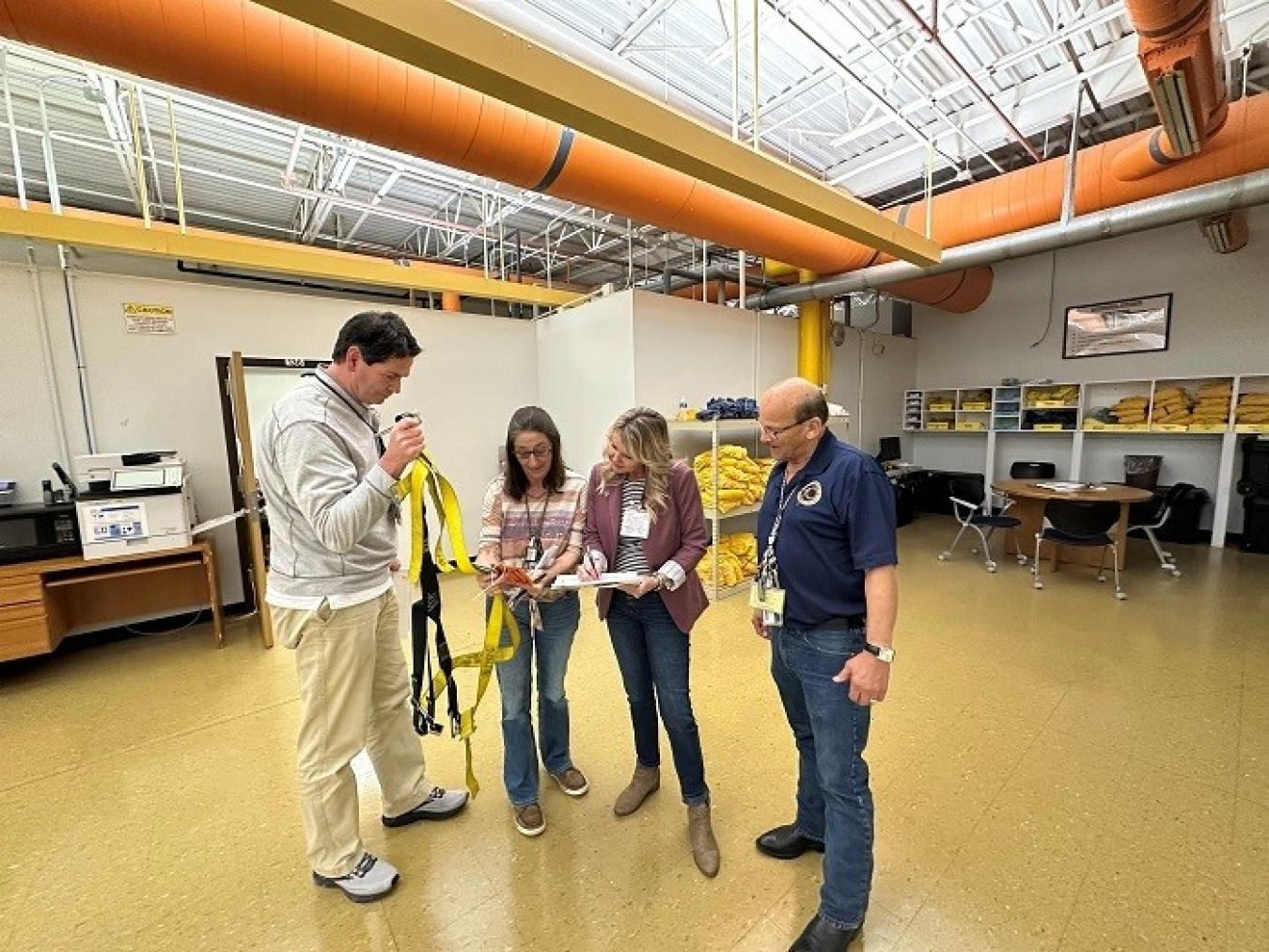The U.S. Department of Energy Office of Environmental Management’s Portsmouth Site recently partnered with a labor union to develop a course to enhance the safety and effectiveness of facility inspections across the site.
Portsmouth/Paducah Project Office
June 11, 2024
Students conduct the practical portion of the Site Specific Facility Inspection Training course as North Wind Dynamics United Steelworkers Worker-Trainer Melvin Fannin, far right, evaluates.
PIKE COUNTY, Ohio — The U.S. Department of Energy Office of Environmental Management’s Portsmouth Site recently partnered with a labor union to develop a course to enhance the safety and effectiveness of facility inspections across the site.
The joint effort between North Wind Dynamics (NWD), Portsmouth’s infrastructure support services contractor, and United Steelworkers (USW) resulted in the creation of the Site Specific Facility Inspection Training course, which is available to all site contractors.
“We believe this cooperative effort will not only enhance safety but promote a culture of continuous improvement and collaboration at the Portsmouth Site,” NWD Environmental, Safety, Health and Quality Manager Matt Miller said.
The collaboration combines NWD’s expertise in site-specific assessments and inspection protocols with USW’s valuable insights into the challenges and best practices of facility inspections.
By combining knowledge and resources, NWD and USW developed a comprehensive training course to address the specific needs and requirements of facility inspections. The collaborative approach ensures the training course is practical, relevant and tailored to the unique needs of Portsmouth Site employees.
“The class was highly enlightening,” training specialist and class participant Bernard Pertuset said. “It provided the necessary tools to be able to identify hazards that may have gone unnoticed.”
The course covers topics such as hazard identification, risk assessment, regulatory compliance and effective communication strategies.
-Contributor: Matthew Miller

